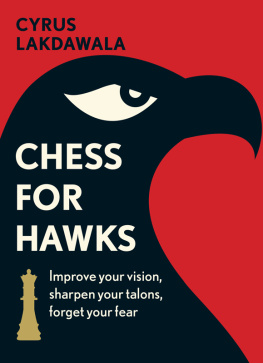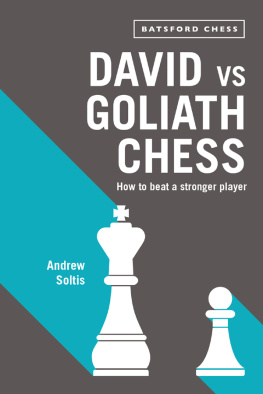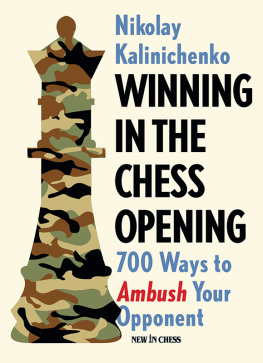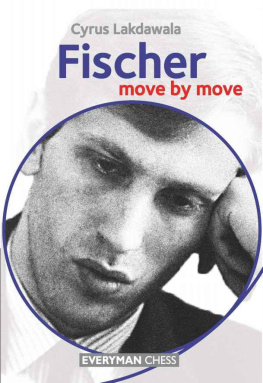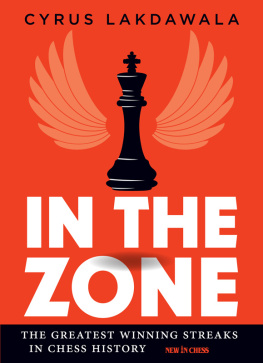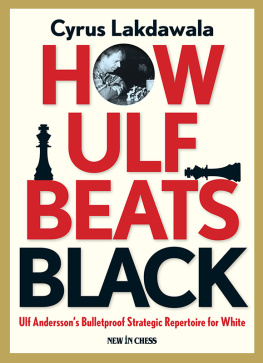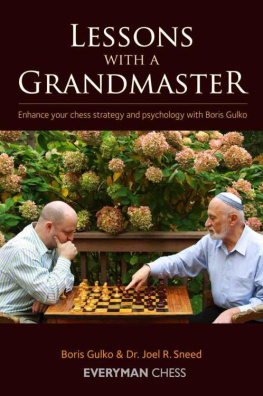Chess for Hawks
Cyrus Lakdawala
Chess for Hawks
Improve your vision, sharpen your talons, forget your fear
New In Chess 2017
2017 New In Chess
Published by New In Chess, Alkmaar, The Netherlands
www.newinchess.com
All rights reserved. No part of this book may be reproduced, stored in a retrieval system or transmitted in any form or by any means, electronic, mechanical, photocopying, recording or otherwise, without the prior written permission from the publisher.
Cover design: Ron van Roon
Supervision: Peter Boel
Proofreading: Maaike Keetman
Production: Anton Schermer
Have you found any errors in this book?
Please send your remarks to and implement them in a possible next edition.
ISBN: 978-90-5691-719-7
Explanation of symbols
The chessboard with its coordinates:


| White to move |

| Black to move |
King |
Queen |
Rook |
Bishop |
Knight |

| White stands slightly better |

| Black stands slightly better |

| White stands better |

| Black stands better |
+ | White has a decisive advantage |
+ | Black has a decisive advantage |
= | balanced position |
! | good move |
!! | excellent move |
? | bad move |
?? | blunder |
!? | interesting move |
?! | dubious move |
Introduction
The root presupposes everything else Henri Matisse
The starting position of a chess game is the same for all of us. Upon this blank canvass we all project our stylistic world view either peaceful and cautious, or adventurous and quick to initiate conflict. Our styles reflect exactly that which we love and that which we fear. When a naturally aggressive player sees complications arising, he or she thinks: Hooray, an adventure! To a player like me, the concept of complication means looking into the face of a sinister stranger I dont trust and dont like on first sight.
The parable of e2 versus e7
There is one type of person whose natural instinct is to push to the front line of an emergency situation. I am not one of those people.
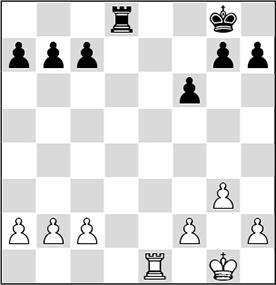
At age 8, if memory serves, I reached the following position as White in my third grade lunch room chess club, against a 10-year-old rival. I played the most natural move on the board, which was e2, covering my second rank against his d2 threat. At this point, the teacher tisk tisked my move, when he revealed: Why not play your rook to the seventh rank instead? You would be a much stronger player if you would stop playing like such a sissy. For me this was an epiphany on par with that time Sir Isaac Newton got bonked on the head with an apple (I learned this in second grade science class). The teachers humiliating sissy pronouncement induced the following physical effects on me:
1. I froze like a startled deer, followed by a gasping intake of breath and a pounding roar in my ears.
2. I experienced the odd feeling that the room receded before my eyes, and thought the power and lights went out, when in reality it was just the blood draining from my head.
3. My half-eaten chutney and cheese sandwich plunged to the floor from my now nerveless fingers, making an unpleasant Splat! sound, which further offended my already offended ears.
It had never even occurred to me to take an aggressive stance by placing my rook on e7. I realized to my horror that I was a dove (which is this books euphemistic replacement for the teachers far ruder word sissy). But I could cure myself, right? I would go over Morphys and Tals games, and solve millions of tactical puzzles which would release my inner hawk, and everything would be fixed, right?
Well, not quite. Today, almost a half century later, I cant truthfully call myself anything but a dove, since my brain is designed for the abstract of logic and planning, rather than specificity of calculation. When it comes to our negative stylistic tendencies its a matter of unlearning, rather than learning to live with our limitations. I still struggle with issues of aggression or the lack of it over the board and a transformation to a pure hawk would be as unlikely as a left-handed person who suddenly decides to switch to the majority right hand. The difference is today Im aware of my weaknesses, and adjust accordingly.
This book is mainly for the doves out there, who seek to reduce their natural tendencies and want to move closer to hawk status. Essentially, the purpose of this book is for you to reflect deeply at your own style, and correctly gauge where you stand. Are you lopsided (which is by far the most likely statistic)? Or are you a balanced player?
Now it may strike you that a player with my style advising you on how to play more aggressively is much the same as the chicken-hawk politician who dodged military service in his youth, and now, in old age, is pro war in every possible situation. Im not promulgating an instant-aggression cure to the doves who read this book. Instead, my point is that exact knowledge of where you stand stylistically can be weaponized. For instance, if my opponent is a tactical-leaning IM, then I know not to enter an open position with crowded pieces on the board, since he (or she) will out-hawk me virtually every time. But if I can lure him or her into an ending, or a simplified, logic based position with little scope for tactics, I increase my chances to win exponentially. When I read a chess book and follow the writers advice, which may be inappropriate to my style, if I follow it blindly and lose, am I not evoking the Nuremberg Defense?: I was just following orders.
This book isnt about my offering you advice. Instead, it is comprised of a series of questions about your style which you should ask yourself if you feel that your style is too heavily weighted toward static factors, like material considerations and structure, over dynamic factors like piece play, initiative and attacking chances. Im not asking you to play chess with divided loyalties. Our goal is to interpret the chess boards reality with clear, unbiased eyes, since sometimes we must play in the positions attributes, despite our stylistic inclination to do exactly the opposite. We are forced to obey the positions commands and continue to play in a coldly factual way.
Another motivation for writing this book is for the natural strategist to understand the inclinations and mental processes of aggressive tacticians to survive their assaults and dirty attempts to confuse the innocent us. In most positions the club player will only look for the how of the position. Its every bit as important to ascertain the why? of our opponents motivation.
Next page
